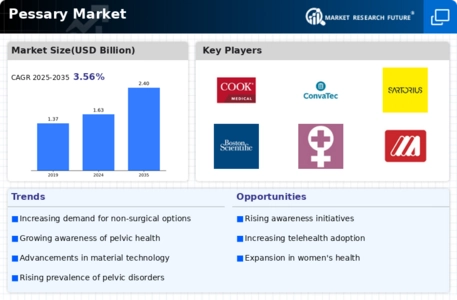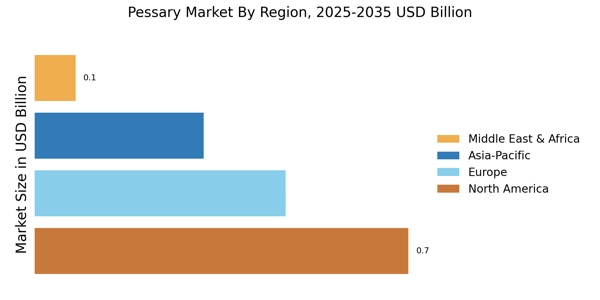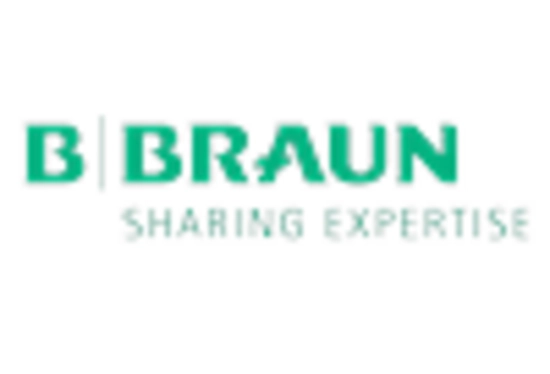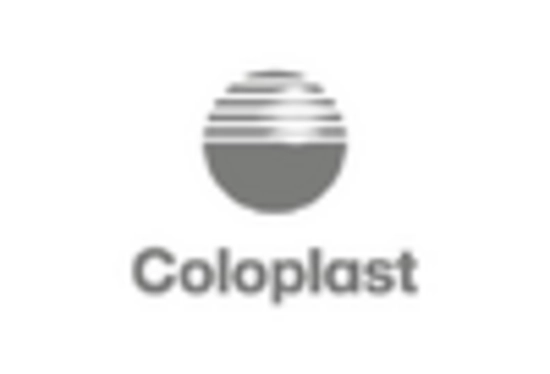Rising Healthcare Expenditure
The upward trend in healthcare expenditure across various regions is contributing to the growth of the Pessary Market. As countries allocate more resources to healthcare, there is a corresponding increase in the availability of treatment options for women's health issues. In many regions, healthcare spending has seen a rise of 5 to 10% annually, which facilitates better access to medical devices, including pessaries. This financial commitment allows for improved patient education and awareness regarding pelvic floor disorders and their management. Consequently, as healthcare systems invest in innovative solutions, the demand for pessaries is expected to grow, reflecting a broader commitment to enhancing women's health outcomes.
Increased Focus on Preventive Healthcare
The growing emphasis on preventive healthcare is driving the Pessary Market as more women seek proactive solutions for pelvic floor health. Healthcare providers are increasingly promoting awareness of pelvic floor disorders and the importance of early intervention. This focus on prevention aligns with broader public health initiatives aimed at reducing the incidence of chronic conditions. As women become more informed about their health, they are more likely to explore options such as pessaries to manage symptoms before they escalate. This trend suggests a potential increase in the adoption of pessaries, as they are viewed as a practical and effective preventive measure.
Growing Acceptance of Non-Surgical Options
The Pessary Market is experiencing growth due to the increasing acceptance of non-surgical treatment options among women. Many patients prefer conservative management strategies for pelvic floor disorders, as they often involve fewer risks and complications compared to surgical interventions. This shift in patient preference is supported by healthcare professionals who advocate for the use of pessaries as a first-line treatment. Studies suggest that non-surgical options can be effective in managing symptoms, leading to higher patient satisfaction rates. As awareness of these alternatives spreads, the market for pessaries is likely to expand, driven by a collective desire for safer, less invasive treatment modalities.
Advancements in Pessary Design and Materials
Innovations in the design and materials used in pessaries are significantly influencing the Pessary Market. Recent developments have led to the creation of more comfortable, user-friendly, and effective pessaries. For instance, the introduction of silicone and other biocompatible materials has improved the overall patient experience, reducing discomfort and enhancing usability. These advancements not only cater to the diverse needs of patients but also encourage healthcare providers to recommend pessaries more frequently. As manufacturers continue to invest in research and development, the market is poised for growth, with new designs that address specific conditions and patient preferences.
Increasing Prevalence of Pelvic Floor Disorders
The rising incidence of pelvic floor disorders, such as pelvic organ prolapse and urinary incontinence, is a notable driver in the Pessary Market. Research indicates that approximately 25 to 50% of women experience some form of pelvic floor disorder during their lifetime. This growing prevalence necessitates effective management solutions, leading to an increased demand for pessaries. As healthcare providers become more aware of the benefits of pessaries, including their non-invasive nature and ease of use, the market is likely to expand. Furthermore, the increasing focus on women's health issues has prompted healthcare systems to prioritize treatment options for pelvic floor disorders, thereby enhancing the visibility and acceptance of pessaries as a viable therapeutic option.


















Leave a Comment